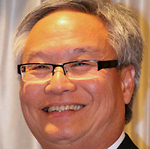Peter Chang-Sing, MD, FHRS
This page provides information about a featured electrophysiologist, cardiologist, cardiothoracic surgeon, hospital, heart hospital, arrhythmia center, or atrial fibrillation center.
On this page you will find an overview of this atrial fibrillation patient services provider's atrial fibrillation treatments and background, as well as information about this provider's specialized afib procedures, such as catheter ablation, maze surgery, or the mini maze procedure, and the provider's treatment results, when available. There are also reviews by other afib patients, when available.
Provide a Patient Review List Your Services with Us

6 Woodland Road, Ste 304
St. Helena, California 94574
United States
Phone: 855-222-AFIB
About
Dr. Chang-Sing is Chief of Cardiovascular Disease and Cardiac Surgery and Medical Director of the Cardiac Electrophysiology Lab at Santa Rosa Memorial Hospital and St. Helena Hospital. His practice consists of consultative as well as procedural cardiology, with interests in congestive heart failure, arrhythmia management, and coronary artery disease. He has performed over 5,000 Catheter Ablations including over 1,000 curative ablations for atrial fibrillation.
Dr. Peter Chang-Sing has been in clinical practice in cardiology in Santa Rosa since 1991. He received his B.S. in Biological Sciences and M.S. in Electrical Engineering from Stanford University, and was then concurrently enrolled in the M.D. program at Yale Medical School and the PhD program at Harvard Medical School, where he also taught. He completed his internship in Internal Medicine at New York University Medical Center, and his residency in Internal Medicine and fellowships in Cardiology and Clinical Cardiac Electrophysiology at Cedars-Sinai Medical Center in Los Angeles.
He is certified by the American Board of Internal Medicine in Internal Medicine, Cardiovascular Disease, and Clinical Cardiac Electrophysiology. He is a Fellow of the American College of Cardiology and a Fellow of the Heart Rhythm Society.
Atrial Fibrillation Procedures
- Radiofrequency catheter ablation (cardiac ablation)
- Pacemaker Implantation
Specialized Procedures
Hybrid Maze - The Most Advanced Technique to Treat A-Fib
Of the many specialized procedures, the Hybrid Maze is the most revolutionized surgical ablation procedures. This type of minimally invasive surgical technique is designed in stages custom to the patient’s needs and allows for supplementary benefits in comparison to the other techniques associated with surgical ablation.
Available at only a handful of U.S. medical centers, the Hybrid Maze procedure involves the use of radiofrequency waves (modified electrical energy) to create precise scar lines on the heart’s surface. These scars redirect the erratic electrical impulses of atrial fibrillation to follow a normal electrical pathway through the heart. Our surgeons use specially designed instruments to deliver the radiofrequency waves to the abnormal heart tissue.
Stage I - This procedure can be performed through tiny incisions made on each side of the chest. Small, lighted instruments are then used to create lesions on the outside of the heart, which makes scar tissue that blocks the electrical short circuits causing the irregular heart rhythm. The operation takes about two and a half hours, and is followed by a hospital stay of three to four days.
Stage II - For those patients for whom Stage I is not enough, it may require a specially trained cardiologist or electrophysiologist to perform a minimally invasive catheter ablation. During the procedure, the electrophysiologist creates more scar lines in the upper chambers of the inside of the heart. By combining procedures, patients benefit from higher success rates and less complications because each specialty can ablate areas of the heart that are best suited to their different approaches.
Like many other heart surgeries performed here, surgical radiofrequency ablation can be done on a beating heart and does not require the use of a heart-lung machine.
Often referred to as the “hybrid” procedure, it combines minimally invasive surgical techniques with the latest advances in catheter ablation. The two-pronged approach gives doctors access to both the inside and outside of the heart at the same time, helping to more completely block the erratic electrical signals that cause atrial fibrillation.
Patient Reviews
Click here to view patient reviews.
